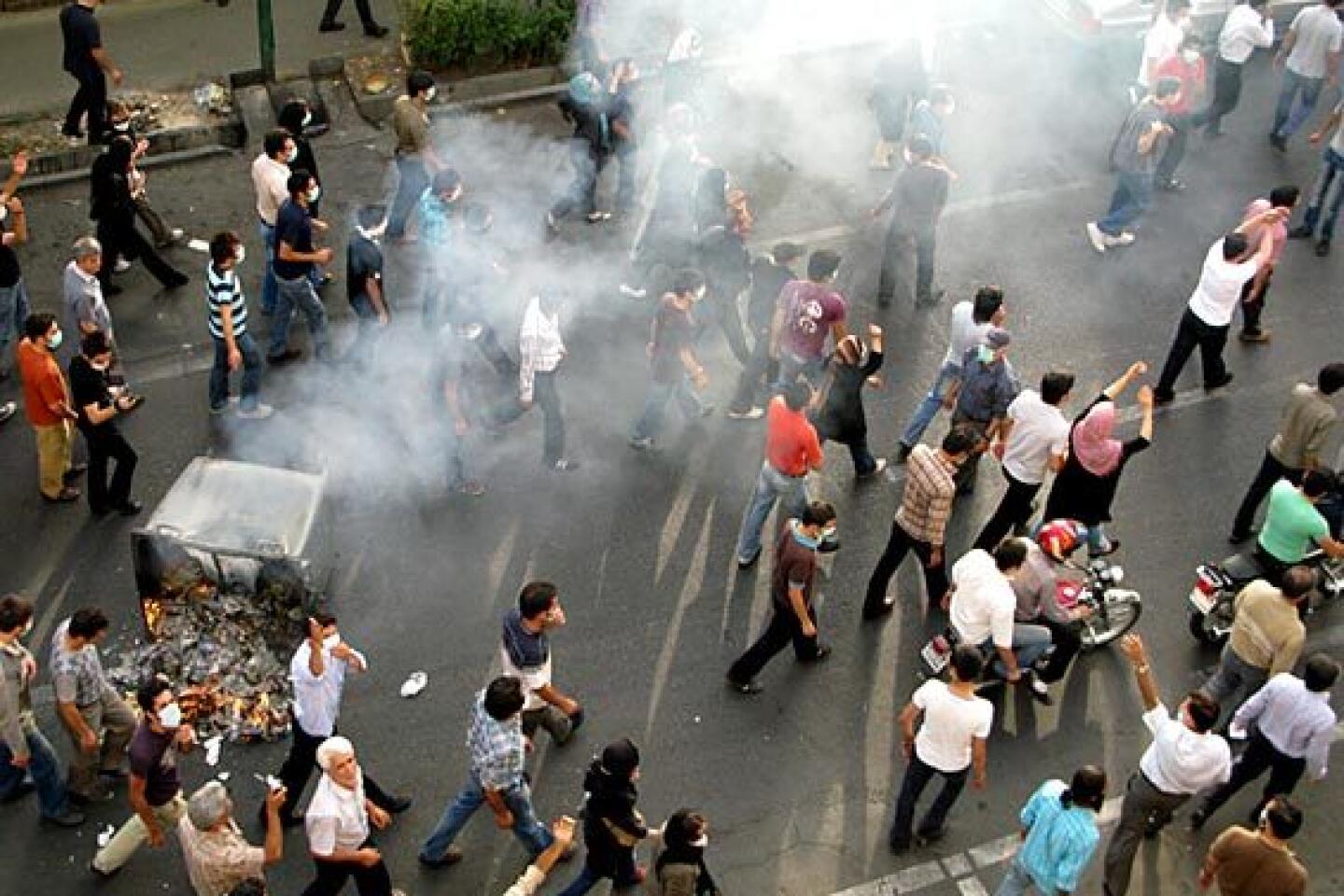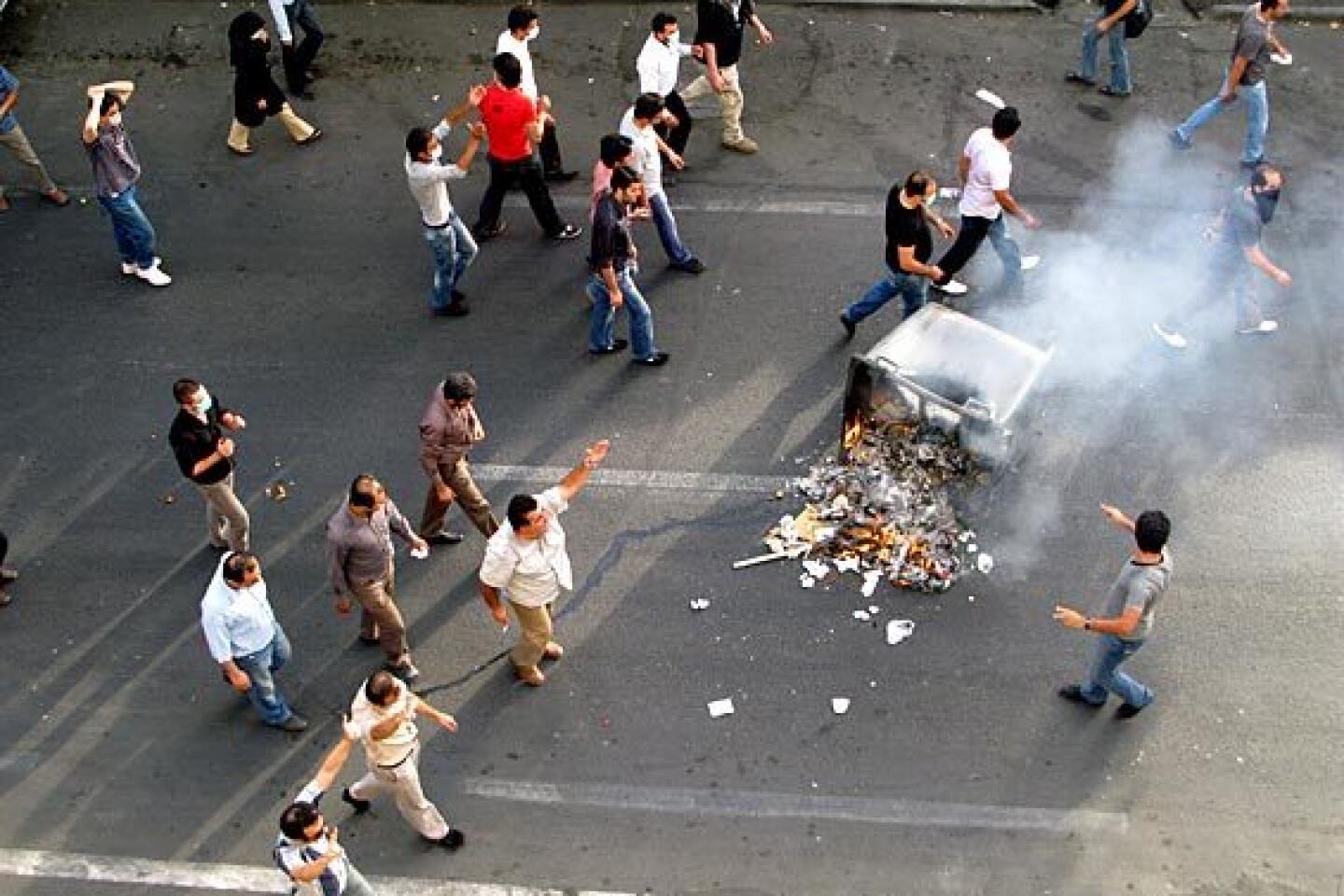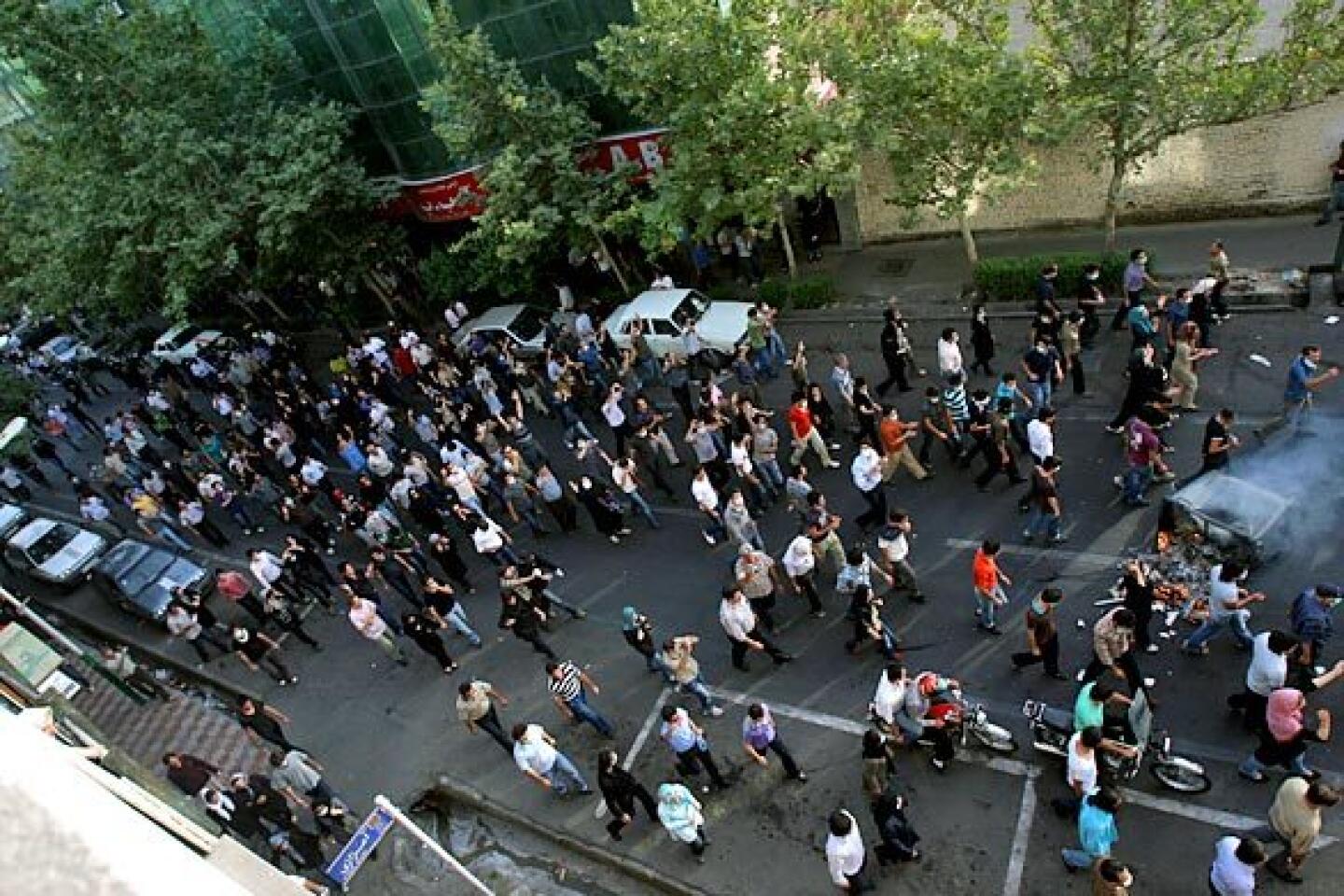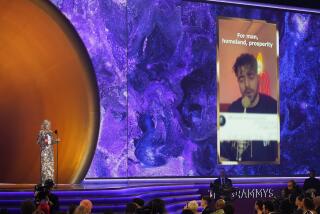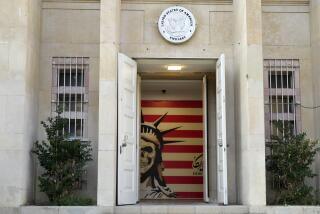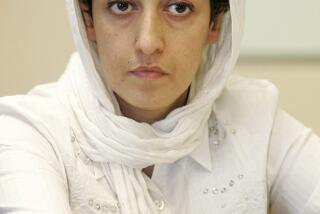Iranian expatriate artists’ projects give voice to countrymen
Watching the impassioned crowds surge through Tehran’s tense streets, pop singer Andy Madadian wanted to take action. But how?
An Armenian native of Iran who has lived for three decades in Los Angeles, Madadian avoids direct involvement in his homeland’s politics. But as Iran was plunged into crisis last month by a fiercely disputed presidential election, the man known as “the Persian Elvis” wanted to send a musical message of sympathy and support to his countrymen.
So it was that on June 24, working with A-list producer Don Was, rock singer Jon Bon Jovi and his longtime guitarist Richie Sambora, Madadian recorded a propulsive cover of “Stand by Me,” the old Ben E. King classic, with lyrics in Farsi and English. Although “Stand by Me” -- or, if you prefer, “Ma Yeki Hastim,” which translates as “We Are One” -- is no protest anthem, it appears to have struck a chord, judging by its combined 600,000 hits on YouTube and other sites.
“You can say that the mere fact that I’m singing is making a political statement, because my music is banned” in Iran, Madadian said -- adding, with a smile, that his work still circulates there via pirated copies.
“I think the youth in Iran, more than anything, they want to have the freedom of thought, which is Internet, which is cinema, which is music,” he continued. “And we’re trying to say, ‘We hear you, we sympathize, we’re trying to get it to you.’ ”
In recent days, Iranian expatriate writers, poets, artists, filmmakers and performers, a large number of whom make their homes in Southern California, have been riveted by the situation unfolding in their homeland. A few have spoken out publicly, denouncing the regime of Iranian President Mahmoud Ahmadinejad.
Others, like Madadian, have responded to the turmoil by making work that expresses a more generalized solidarity with Iran’s people, conveying messages more subliminal and elliptical than overt.
In one prominent effort, a group of expatriate actors and musicians, led by Iranian British punk-rock-hip-hop artist joined to make a song and video titled “United for Neda.” The video includes graphic images of violence and injured citizens. Assembled from cellphone video footage, which gives it an urgent, vérité feel, the video pays tribute to Neda Agha-Soltan, the young woman whose shooting death, captured on video and posted on YouTube, turned her into an instant emblem of the protests. Written and produced by Taylor, the song opens with the pointed verse, “Lord, another day goes by/And I pray that they all stay strong and try to make it through the hate, all the pain and the lies.”
In Iran, China and other countries where free speech is a dodgy proposition at best, semi-anonymous Twitterers and bloggers may be willing to post their opinions for all to see. But Iranian artists, whether still resident or in exile, often have taken a more circumspect approach, drawing on the richly metaphorical, centuries-old traditions of Persian poetry, music and art to express themselves, while relying on technology to broadcast their ideas to audiences beyond the reach of censors.
Embedding controversial ideas in metaphors and symbolic gestures has become an important strategy during the 30 years since a Muslim theocracy overthrew the U.S.-backed Shah and established the Islamic Republic of Iran.
“Iran is a very metaphorical society. Its films, its arts, its poetry speaks in metaphors and symbols, especially now,” said Reza Aslan, the Iranian American author of “No God but God: The Origins, Evolution, and Future of Islam” and a radio and TV commentator.
To expatriate artists and writers, the stirrings of dissent that erupted in Iran this summer have been visible for some time. Friction over the subordinate status of women, the regime’s repressiveness and the social and economic scars left by Iran’s eight-year war with Iraq in the 1980s are among the recurrent themes that have surfaced in contemporary Iranian film, poetry and art, both at home and abroad.
Those currents have been subtly present in Iranian contemporary art, as reflected in the show “Iran Inside Out” on view at Manhattan’s Chelsea Art Museum. One section of the show dealing with gender and sexuality is revealingly titled in the exhibition catalog as “From Iran to Queeran and Everything in Between.”
Signs of the variety and contradictions bubbling under the surface of Iranian society also have been manifest in contemporary cinema. The flowering of Iranian art film that began in the early 1990s, during a period of relative cultural liberty, produced landmark films by such internationally feted directors as Abbas Kiarostami (“Taste of Cherry”), Mohsen Makhmalbaf (“Kandahar”) and Jafar Panahi (“The White Balloon”). Makhmalbaf has been serving as a spokesman of Mir-Hossein Mousavi, who was a candidate in the presidential election, the results of which he has denounced as fraudulent.
Although rarely containing explicit political content, many of these films lent themselves to a multiplicity of interpretations, including political ones. In “Taste of Cherry,” for instance, the main character’s attempt to enlist three strangers (a soldier, a religious student and a university professor) in tossing dirt on his grave after his planned suicide becomes a provocative meditation on Iran’s social fissures, among other things.
Iranians are not only proud of their film culture, Aslan said, but also are “very film-literate” in being able to read between the lines.
“It’s an audience that’s very adept at reading the movies,” he said. “Many poets in Iran have learned to speak almost a secret language, where political issues are talked about in allegorical ways.”
Sussan Deyhim, an Iranian dancer, composer and vocalist who lives in the U.S., agreed. “When people can’t speak prose, they rely on poetry,” she said. “I think that’s what’s happening in Iranian cinema.”
Deyhim was among the performers on the “United for Neda” video, along with L.A.-based actor Shohreh Aghdashloo, who plays the doomed title character’s aunt in “The Stoning of Soraya M.” Deyhim performed on the soundtrack of “Stoning,” a fact-based drama by Iranian American director Cyrus Nowrasteh about an Iranian woman who is stoned to death after her husband falsely accuses her of adultery.
Deyhim said she believed that, despite the government’s ongoing crackdown, the recent protests had given many Westerners a more nuanced view of Iranian society and culture. The protesters’ courage under fire, their sophisticated use of Twitter, flip-cams and other mass-communication tools, and the glimpses that the demonstrations gave of resolute women presented an image of a cultured, cosmopolitan society, in contrast to the monolithic, drably fundamentalist picture of Iran that Western media usually depict.
“We’ve gotten an amazing, amazing look at what Iran is really about in the last couple of weeks,” she said. “Whatever has happened for the last 30 years is in no way representative of Persian culture. It’s just a dark moment.”
As events in Iran unfold, some Western artists who’ve been drawn into Persian culture through their work are looking on with a heightened sense of involvement. L.A.-based film composer John Debney, who wrote the score for “The Stoning of Soraya M.,” said that while researching the region’s music he has come to greatly admire its “tremendous depth of emotion and soul and sophistication.” He now lends his name to the cause of abolishing the practice of stoning.
“Whether it be Iran or Iraq or Afghanistan, I’m hoping we can get to a place one day where we in the West can [have] an open sharing of our very divergent cultural aspects,” he said.
Other Western artists are filtering the Iranian situation through the prism of past, parallel struggles in their own societies. Joan Baez recently made a new version of the U.S. civil rights anthem “We Shall Overcome,” in which she sings some verses in Farsi. She dedicated it to the people of Iran.
“I think you’re witnessing a kind of culture globalization,” producer Was said. “Everybody watches the same news, drives the same cars. When anybody’s civil liberties are being stomped on anywhere in the world, it affects everybody.”
And whether such expressions of commonality are avowedly political or partially shrouded in subtext, the sentiments appear to be coming through loudly.
“I think what everybody shares in common,” Deyhim said, “is their 200% solidarity with the people of Iran who are standing for us.”
More to Read
The biggest entertainment stories
Get our big stories about Hollywood, film, television, music, arts, culture and more right in your inbox as soon as they publish.
You may occasionally receive promotional content from the Los Angeles Times.
